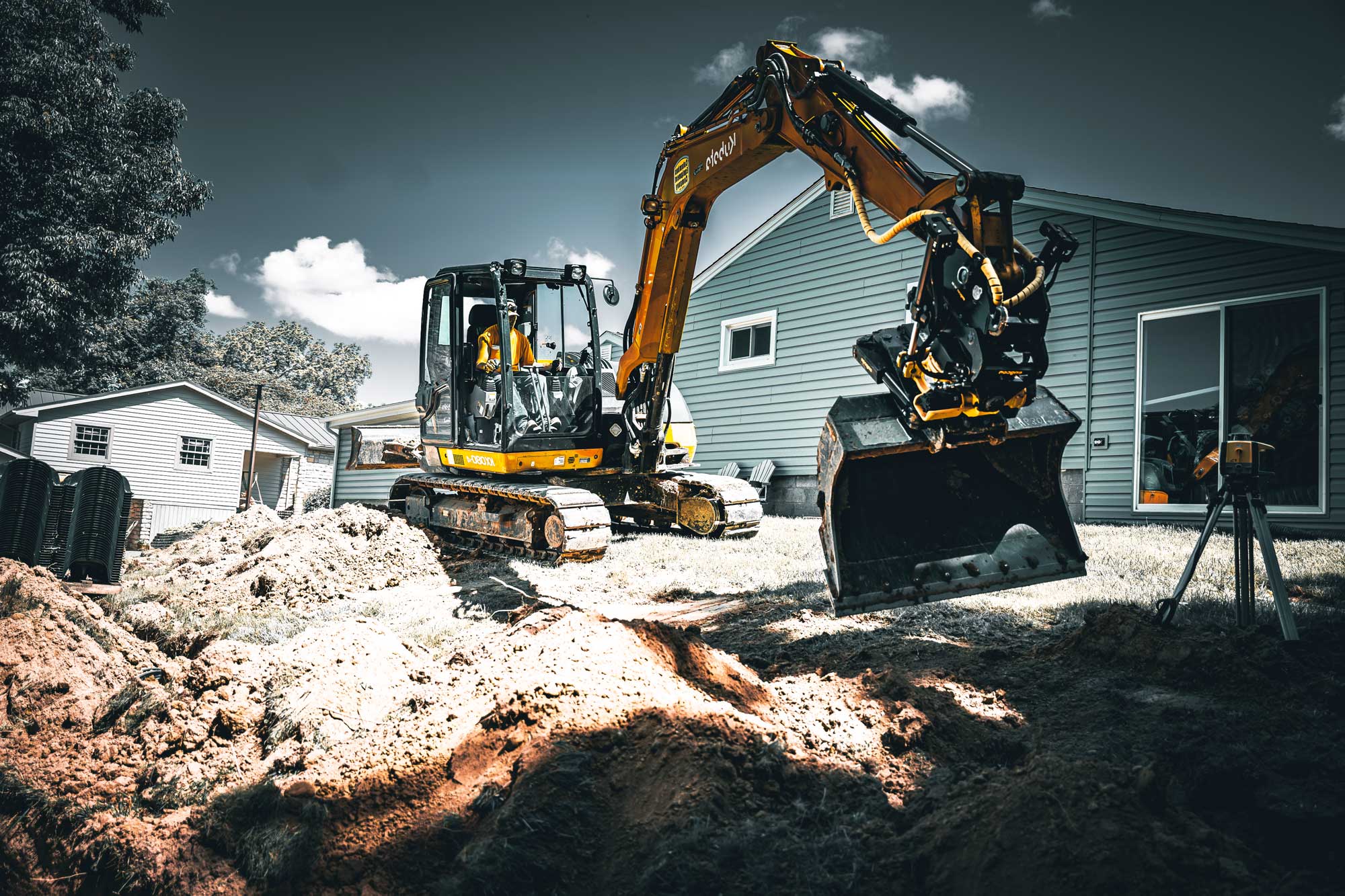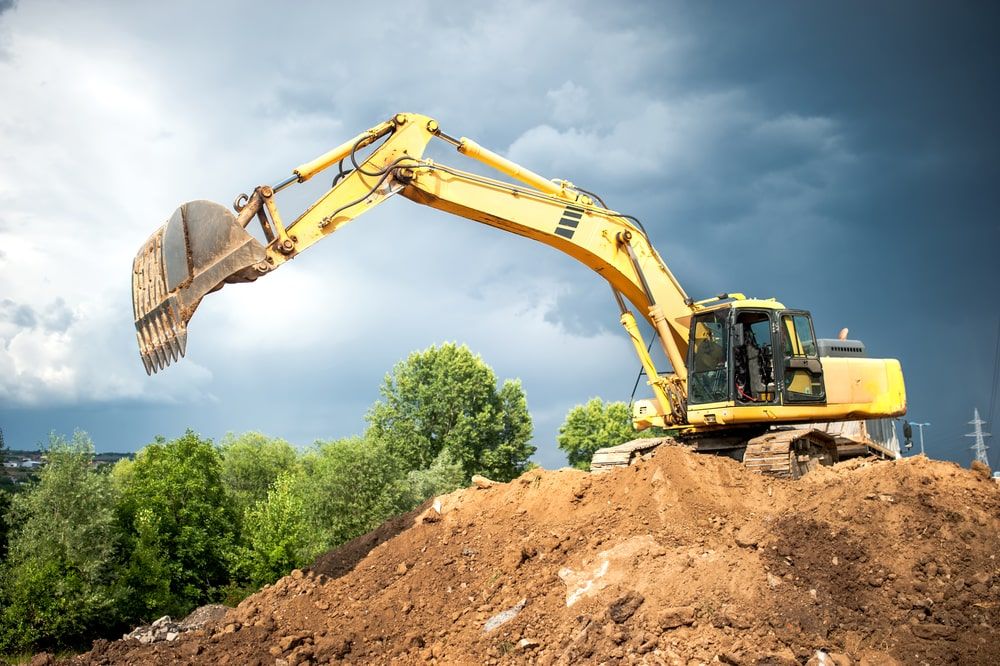Lancaster Trenching - Expert Trenching Solutions in Lancaster, Ohio
Lancaster Trenching - Expert Trenching Solutions in Lancaster, Ohio
Blog Article
Unveiling the Art of Excavation: Pro Tips for Safe and Efficient Excavating
As dirt is turned and earth is relocated, the ins and outs of excavation expose themselves, requiring a keen understanding of tools, soil structure, safety methods, and ecological considerations. The knowledge required to browse these elements properly can mean the difference in between a successful excavation task and a potential catastrophe.
Significance of Proper Devices
To make certain the security and effectiveness of any excavation task, making use of the proper devices is critical. Excavation projects differ in range and complexity, ranging from tiny household landscaping work to massive construction endeavors.
Excavators are essential items of equipment in any kind of digging operation. These functional equipments come in various sizes to fit different project needs. Tiny excavators are excellent for smaller tasks, while larger excavators tackle much more comprehensive jobs successfully. Backhoes are an additional necessary tools type, incorporating the features of a loader and an excavator in one machine. They are beneficial for jobs needing flexibility and ability to move.
Excavators stand out in tasks that need pressing large quantities of soil or particles. By spending in the proper devices, excavation jobs can be completed securely, on time, and with precision.
Comprehending Dirt Composition
A comprehensive grasp of soil structure is fundamental for implementing excavation tasks with accuracy and safety and security. Recognizing the various kinds of dirt is crucial as it directly affects excavation methods, devices option, and general task efficiency. Dirt composition generally includes four primary elements: sand, silt, clay, and raw material. Each part has special properties that influence how dirt responds to excavation procedures.
Silt fragments are smaller sized than sand yet bigger than clay, using modest drain and communication. Organic matter, such as decomposing plant product, affects soil fertility and stability.
Before starting excavation, conducting soil tests to determine its composition and characteristics is necessary. This details helps in choosing the suitable tools, executing precaution, and developing excavation approaches customized to the certain dirt conditions - septic ohio. By recognizing soil structure, excavation specialists can boost project results while guaranteeing safety and security and adherence to best practices
Precaution and Methods
Recognizing dirt make-up is the keystone whereupon precaution and methods for excavation tasks are built, ensuring the well-being of employees and the success of the endeavor. When it involves safety and security throughout excavation, there are numerous essential procedures that need to be executed to reduce dangers and prevent crashes.
Firstly, prior to any digging commences, an extensive assessment of the site must be performed to recognize any type of potential risks such as below ground energies, unstable dirt conditions, or neighboring structures that might present a threat. It is critical to have a proficient person look after the excavation procedure to make certain that all security procedures are adhered to purely.
In addition, all employees included in the excavation must be properly educated in safe excavating practices and the correct operation of equipment. Individual protective devices (PPE) such as tough hats, high presence apparel, gloves, and safety and security boots ought to be used at all times to decrease the threat of injuries. lancaster trenching. Regular safety conferences and tool kit talks need to likewise be performed to keep all workers go to this website educated concerning possible risks and strengthen secure work methods. By sticking to these precaution and methods, excavation tasks can be completed effectively and without event.
Effective Excavation Planning
When embarking on an excavation task, precise planning is important to ensure performance, safety, and effective end results. Efficient excavation preparation includes numerous key actions that are important for the smooth implementation of the task. The primary step is to perform a thorough site analysis to identify any potential dangers, such as below ground utilities or unsteady dirt conditions. This information is essential for developing a detailed excavation strategy that consists of precaution and risk reduction techniques.
As soon as the website analysis is full, the following step is to develop a clear timeline and schedule for the excavation tasks. This includes figuring out the series of tasks, tools needs, and manpower allowance. Appropriate scheduling aids stay clear of delays and makes certain that the job stays on track.

In addition, communication among all staff member is critical throughout the planning stage. Clear directives, routine updates, and effective coordination are crucial for an effective excavation task. By investing effort and time in careful planning, excavation teams can considerably improve performance, reduce dangers, and attain successful end results.

Taking Care Of Environmental Considerations
With enhancing focus on ecological sustainability in construction practices, managing ecological factors to consider has actually ended up being a vital aspect of excavation tasks. Excavation activities have the possible to influence the surrounding environment through dirt erosion, debris runoff, environment disturbance, and contamination of water sources. To mitigate these dangers, it is vital to apply finest practices that prioritize environmental management.

Moreover, correct waste management is essential to avoid soil and water contamination. Implementing procedures for the disposal of harmful products, recycling of waste materials, and lessening the use of damaging chemicals can substantially blog decrease the environmental effect of excavation jobs. By incorporating these methods right into excavation planning and execution, construction companies can make sure that their projects are not only secure and effective however additionally eco next accountable.
Conclusion
To conclude, mastering the art of excavation calls for a detailed understanding of proper devices, soil structure, precaution, and effective preparation. By adhering to these guidelines and taking into consideration environmental variables, excavations can be conducted securely and effectively. It is important to prioritize safety and security and efficiency in every digging task to ensure effective end results.
As soil is transformed and earth is moved, the complexities of excavation disclose themselves, demanding an eager understanding of tools, soil make-up, security protocols, and ecological considerations.To make certain the security and effectiveness of any type of excavation project, using the proper devices is vital.A comprehensive understanding of soil structure is fundamental for executing excavation tasks with accuracy and safety. Understanding the various kinds of soil is essential as it directly influences excavation methods, equipment option, and total task effectiveness. By understanding soil composition, excavation professionals can improve project outcomes while guaranteeing safety and adherence to ideal techniques.
Report this page